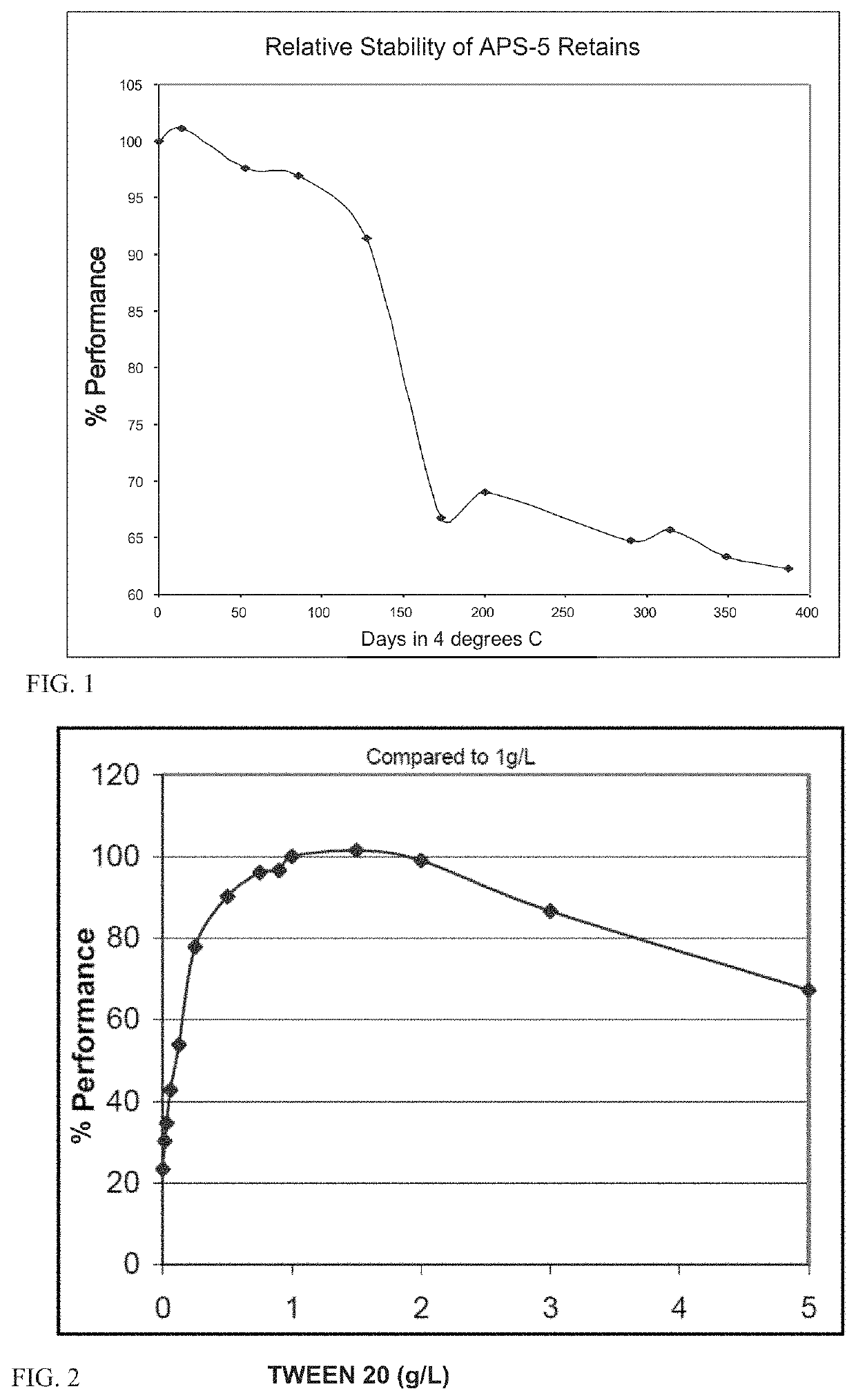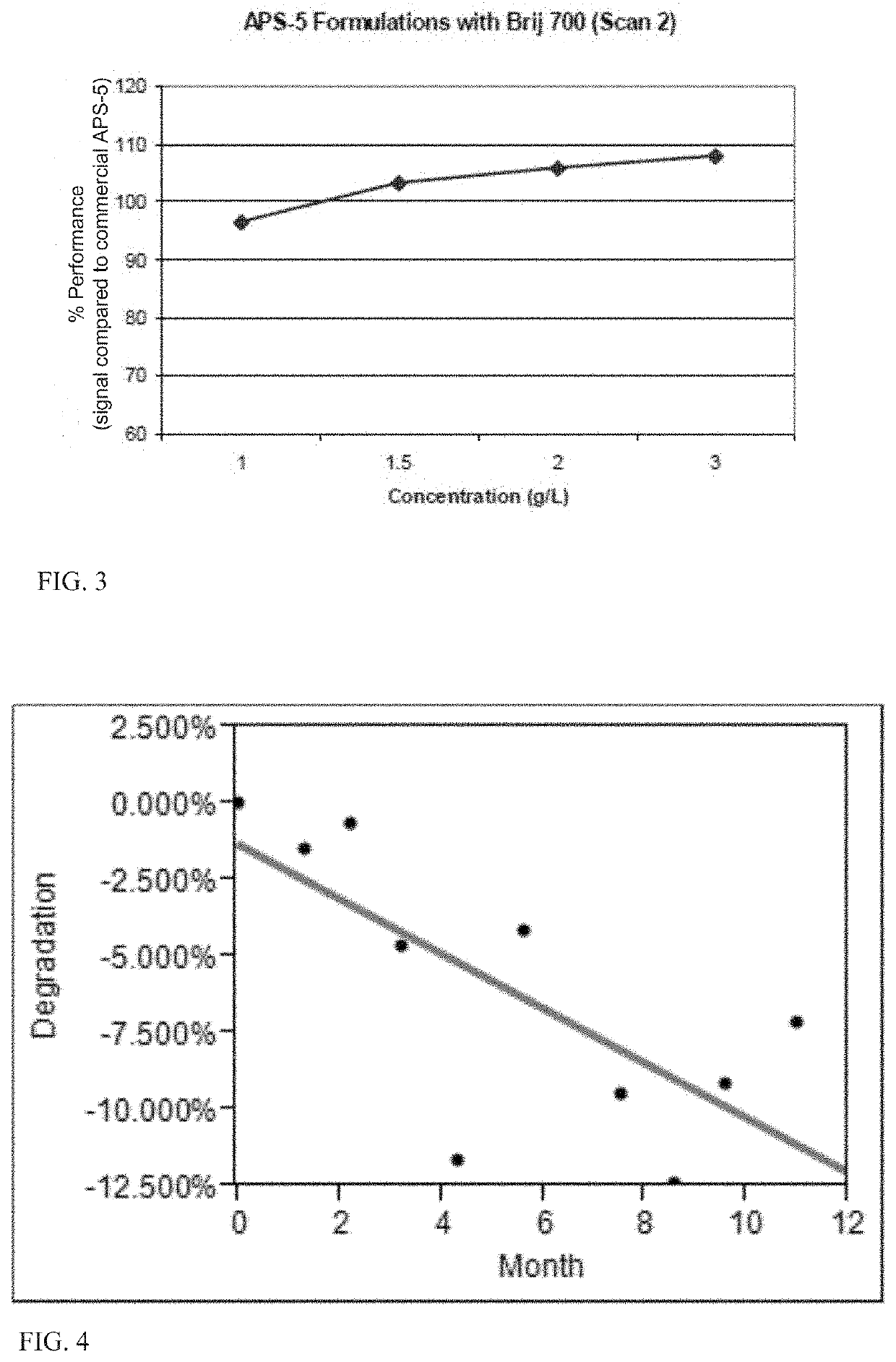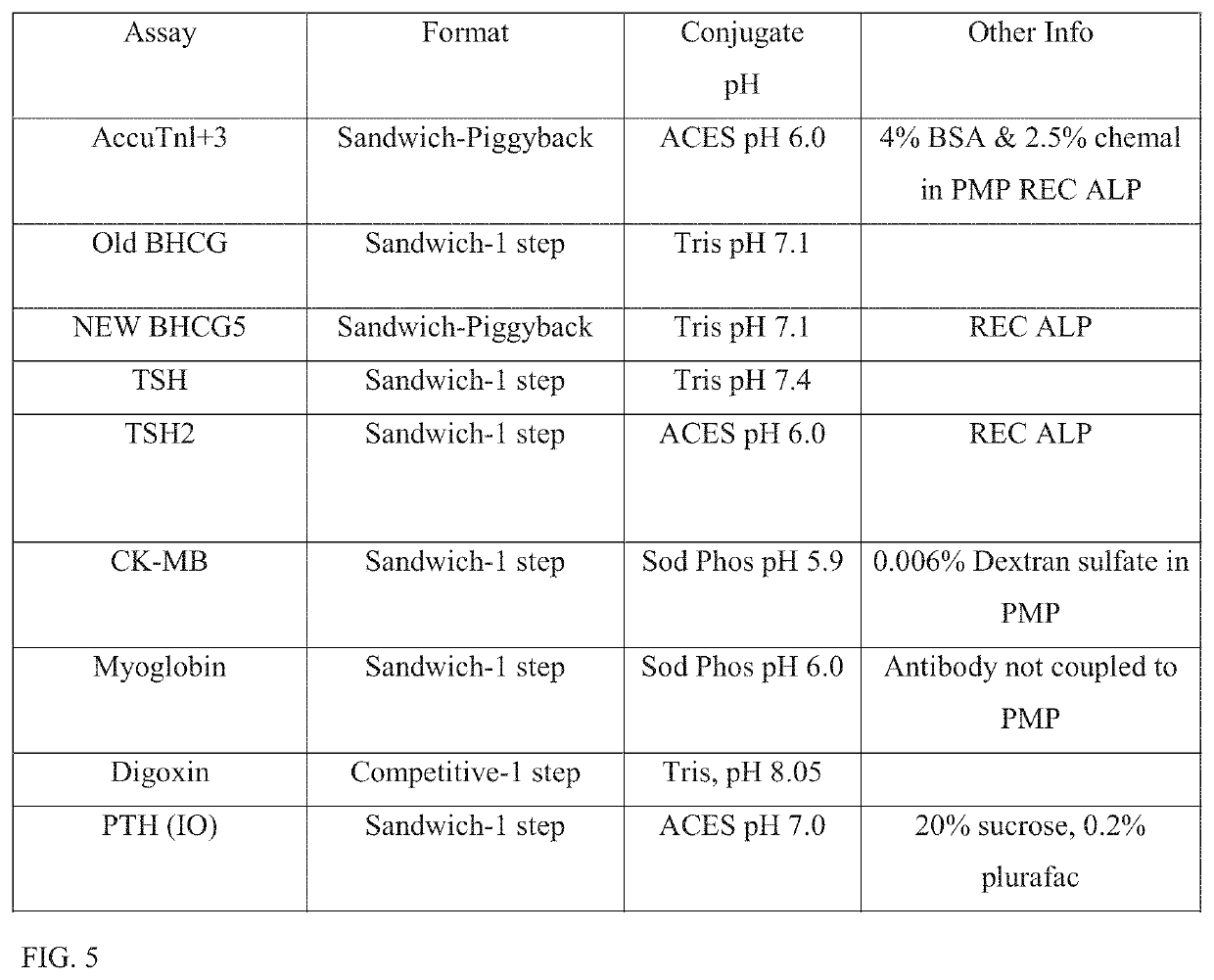Chemiluminescent substrates
a technology of chemiluminescent substrates and substrates, applied in the field of chemiluminescent substrates, can solve the problems of not being able to use automated immunoassay systems, and achieve the effects of improving stability, rapid signal generation, and improving signal generation tim
- Summary
- Abstract
- Description
- Claims
- Application Information
AI Technical Summary
Benefits of technology
Problems solved by technology
Method used
Image
Examples
examples
Stability Test A
[0238]An aliquot (100 μL) of AP substrate formulation was added to a micro-titer plate well (8 replicates for each formulation). The plate was placed in a luminescence plate reader (Luminoskan, Labtech) and to each well was injected 20 μL of AP solution (2 ng / mL). Luminescence signal was read after 30 seconds and intergraded for 2 seconds.
example 1
mulation Stability
[0241]Various lots of APS-5 were evaluated for performance stability over time using Stability Test A. The relative stability of these representative lots is shown in FIG. 1. A significant reduction in performance was seen after 100 days at 4° C.
[0242]To identify the formulation component that was predominantly responsible for the limited stability, additional quantities (50% more) of each component were added to a single lot of APS-5 and these modified formulations were tested using Stability Test A. The results are shown in Table 1.
[0243]
TABLE 1APS-5 Performance with additional componentsMaterialPerformanceAPS-5 Solid94.2%Lucigenin91.9%SDS70.5%TWEEN ® 20131.9%Sodium Sulfite100.1%
TWEEN® 20 exhibited the greatest impact on assay performance. The same experiment was again repeated with various amounts of TWEEN® 20. Assay performance was compared to a standard APS-5 formulation with 1 g / L TWEEN® 20 (0.1% w / v). As shown in FIG. 2, each of 0.5, 0.75, 0.9, 1, 1.5, and 2...
example 2
ve Non-Ionic Surfactants
[0250]Experiments were performed in order to determine the effect on stability of ether-linked nonionic surfactants. The following surfactants were investigated: Pluronic F68, Pluronic F108, Pluronic P103, and Pluronic P105 and ether-linked non-ionic surfactants, including Igepal CO-990, Igepal DM-970, TRITON X-405, TRITON X-405 reduced, BRIJ 78, and BRIJ 700.
[0251]The composition used for the testing consisted of the following: CPA (0.30 g / L), 0.3 M TRIS buffer pH 9.35, lucigenin (3.26 mg / L), Na2SO3 (10 mg / L), SDS (1 g / L) and the nonionic surfactant at indicated concentration. The compositions were stored at 4° C. and tested from time to time during storage. Relative signal intensity as percentage of a reference standard composition (commercial APS-5), signal profiles, and background for test compositions was determined. Each alternative nonionic surfactant was tested at 0.25 g / L, 0.5 g / L, 1.0 g / L, 1.5 g / L, 2.0 g / L, and 3.0 g / L non-ionic surfactant in the te...
PUM
| Property | Measurement | Unit |
|---|---|---|
| mean diameter | aaaaa | aaaaa |
| mean diameter | aaaaa | aaaaa |
| mean diameter | aaaaa | aaaaa |
Abstract
Description
Claims
Application Information
 Login to View More
Login to View More - R&D
- Intellectual Property
- Life Sciences
- Materials
- Tech Scout
- Unparalleled Data Quality
- Higher Quality Content
- 60% Fewer Hallucinations
Browse by: Latest US Patents, China's latest patents, Technical Efficacy Thesaurus, Application Domain, Technology Topic, Popular Technical Reports.
© 2025 PatSnap. All rights reserved.Legal|Privacy policy|Modern Slavery Act Transparency Statement|Sitemap|About US| Contact US: help@patsnap.com



